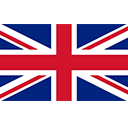About Copenhagen
Welcome to Copenhagen!
Copenhagen is one of the safest cities in the world, easy to access and easy to get around with a well organised infrastructure.
The city has been voted the world’s most livable city several times due to its tolerance, compact size, the waterfront, relaxed and active use of city spaces.
Clean and green. Sustainable focus in everything from urban development to gastronomy and transportation.
A leading gourmet capital of Europe
– boasting 23 Michelin Stars
– location of three Michelin Star NOMA and Geranium; the World’s Best and 2nd Best Restaurant
Combining history and heritage with innovative design and architecture due to a unique blend of creativity, craftsmanship, and democracy
Home to some of the happiest people in the world
Conscious Travelling in Copenhagen
Useful Applications
- The Copenhagen app about exploring Copenhagen including ongoing activities during the time you are in the city: https://www.visitcopenhagen.com/copenhagen/planning/copenhagen-app-gdk1146029
- ‘Journey Planner’ is both a website and an app for planning your travelling in Copenhagen with public transport, website: https://www.rejseplanen.dk/webapp/?language=en_EN#!P|TP!histId|0!histKey|H698330
Copenhagen - Capital of sustainable living
Feel free to use the copy texts below, introducing your delegates to Copenhagen all year round. Use the customized content on your website, SoMe channels, or other promotional material, and copy and paste as you see fit.
It may not come as a surprise that our easily accessible city is one of the most sustainable cities in the world, encompassing economic, social, and environmental sustainability. As with the rest of Denmark, the Danish capital has a long and strong track record of pursuing green solutions that help reduce its carbon footprint. This also applies when it comes to sustainable and year-round leisure activities to embark on; be it taking a dip in Copenhagen’s clean harbour, bike riding across the city, or skiing on top of CopenHill - an artificial skiing slope and recreational hiking area built on top of a local waste management center - and, of course, when it comes to losing oneself into excellent green dining.
The Copenhagen Sustainability Guide
Copenhagen is a frontrunner for sustainable development and solutions, and the city’s ambition is to ensure that as many hosted events and congresses as possible also act as drivers of sustainable development.
To ensure that sustainable transformation is top of mind when planning (and/or attending) an event or congress in Copenhagen, Copenhagen Sustainability Guide includes pre-planning measurements that can help reduce CO2 footprint and resource consumption along with social and lasting impact indicators.
The guide is developed as a digital pre- and post-planning tool - highlighting sustainability ambitions and how these can reduce CO2 emissions and create a social and lasting impact while contributing to the UN’s Sustainable Development Goals. The guide can be viewed here.
How to exercise conscious action when visiting Copenhagen? – a few examples include
Travel to Copenhagen
CO2 emissions from air travel are the largest single contributor to the carbon footprint related to organising a congress. If the travelling distance allows for it, perhaps then consider a more conscious choice and take the train or come by electric vehicle? Alternatively, consider flying economy class; it uses less space and limits carbon emissions per person traveling - or choose direct flights as they reduce the travel distance and the number of fuel-intensive take-offs.
Local transport in the Danish Capital
Copenhagen is a compact city with short distances and efficient infrastructure. So, once you have arrived, consider doing like the locals do and either walk or bicycle, or make use of the city’s efficient public transport system. If you need to take a taxi, there are plenty of electric taxis too.
Eat your way through Copenhagen with a better conscience
Food is an essential part of our environmental footprint, and there are great CO2 variations depending on the different food choices you may choose whilst enjoying Copenhagen’s famed food scene.
Red meat has a particularly high footprint, for instance, so perhaps consider reducing your climate impact by avoiding red meat like beef, veal, and lamb, and opt for poultry instead? (it comes with an approximately 18 times lesser footprint per kilogram).
You might also consider eating vegetarian or vegan, which offers a huge variety of local and innovative cuisines – get inspired by some of the links further below.
Finally, it’s worth mentioning that in Denmark, there is an extensive return and deposit system for cans and bottles, so remember to get your deposit back at a local store instead of throwing it into a trash bin! There is no need to buy bottled water, however, as the Danish tap water is of world-class quality. Simply bring your own bottle and use the tap, or a public drinking fountain for a free refill.
Get inspired to further conscious action in Copenhagen at:
- Restaurants that make sustainable choices in Copenhagen
- 10 ways to act sustainably in Copenhagen
- Best vegetarian and vegan restaurants
- Bike guide to Copenhagen
- Sustainable shopping in Copenhagen
- Sustainability and legacy in business events
- The Copenpay nudging initiative, June-August 2025
Useful Links
Get inspired and discover Copenhagen’s classic tourist attractions, palaces, museums, hidden treasures and much more online at www.visitcopenhagen.com.
Find an extensive overview of restaurants, cafes and bars here.
Visit the Copenhagen neighbourhood guide here.
Find practical tips and information about Copenhagen here.
Sign up to newsletter
For more news and information about Copenhagen sign up for the ‘Copenhagen Unfolded’ newsletter.
Follow VisitCopenhagen on Social Media
Follow Copenhagen Convention Bureau on
Get access to Copenhagen photos & videos at
Hashtags
#visitcopenhagen #copenhagen #copenhagenlife








